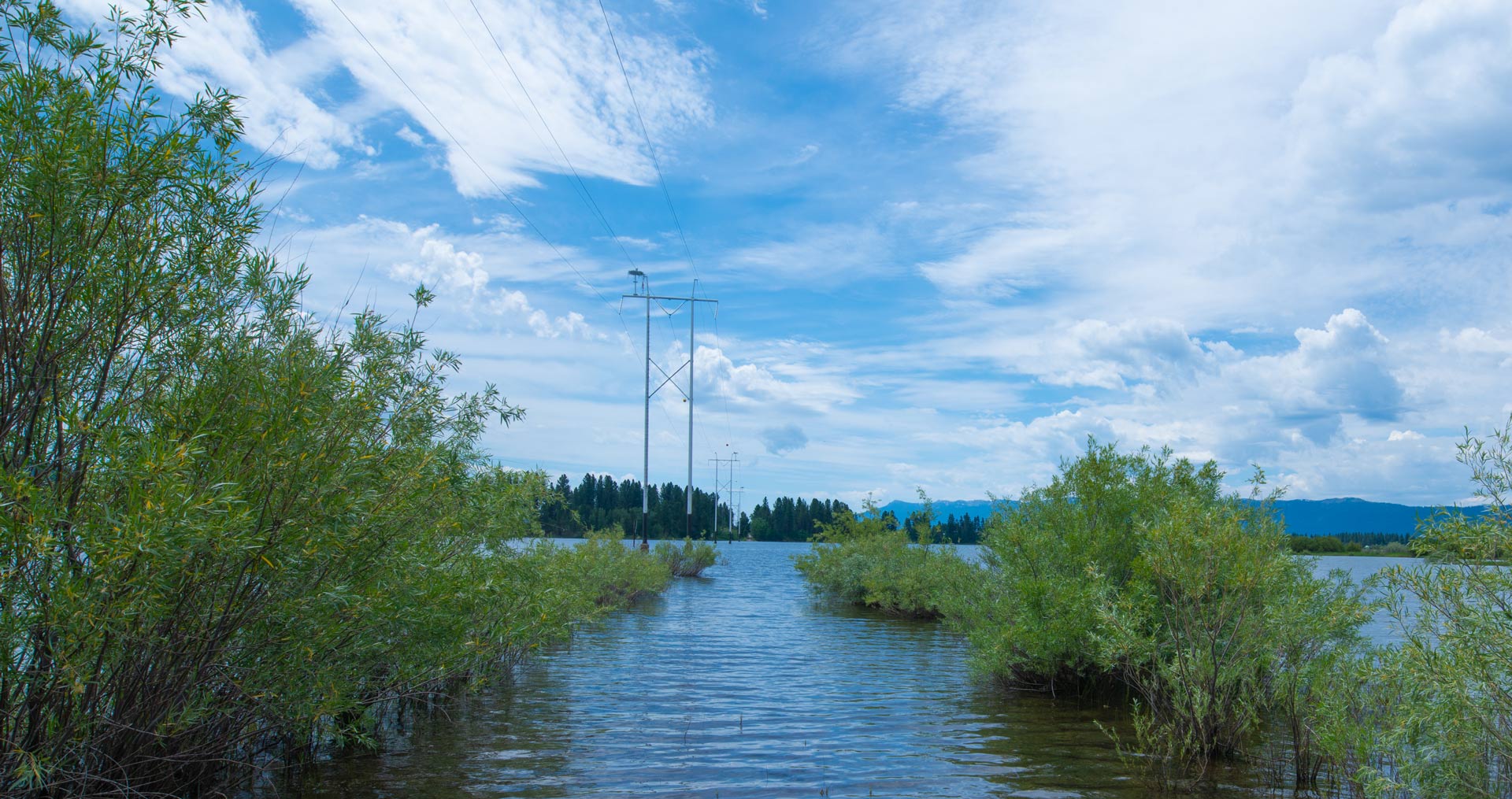Idaho Power owns, operates, and maintains thousands of miles of powerlines and hundreds of substations to deliver energy from power plants to you. The electricity that lights up a bulb at a home in Twin Falls, for example, might’ve been generated at our Hells Canyon Complex. The power that runs an irrigation pump in Canyon County might come from a wind farm in the Magic Valley.
Electricity travels from the power plant to the customer in just a fraction of a second. A business owner in Pocatello can run a vacuum cleaner on power that was produced less than a second before and hundreds of miles away at Hells Canyon or some other power plant.
Transmission lines
Power generated at plants moves through transformers that can increase the voltage as high as 500,000 volts. High-voltage lines, called transmission lines, carry electricity throughout Idaho Power’s 24,000-square-mile service area.
These high-voltage lines make power delivery more efficient, but customers can’t use power directly from them. Instead, power from transmission lines goes through substations and a series of transformers that decrease voltages to distribution levels. A typical Idaho Power distribution voltage is 12,500 volts.
Distribution lines
Lower-voltage lines, called distribution lines, deliver electricity from substations to customers. The final transformers in this sequence, often attached to the tops of poles outside homes and businesses, reduce voltages to 120 or 240 volts before electricity makes its way to irrigation pumps, home appliances, and other equipment.
Underground lines
Idaho Power usually installs transmission lines above ground (also called overhead lines). This is typically the most cost-effective method for customers.
Installing power lines underground is usually much more expensive.
Any request to install a proposed power line underground requires advance payment from the person making the request. This payment is used to perform a detailed engineering analysis of the project.
If the analysis shows the project is possible, the person making the request must pay in advance for the increased cost of installing and operating the transmission line underground.
For more information on underground power lines, visit our frequently asked questions section.
